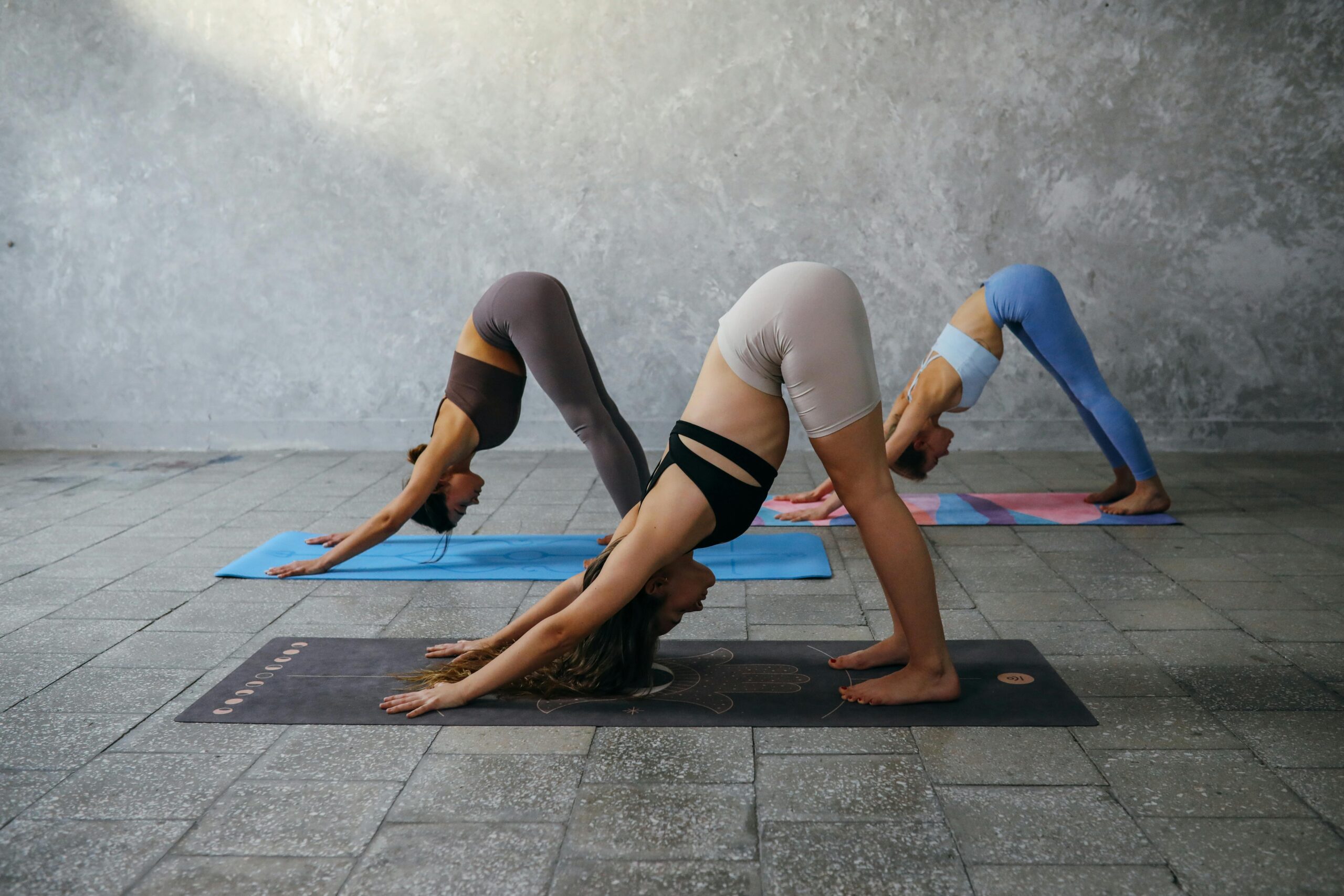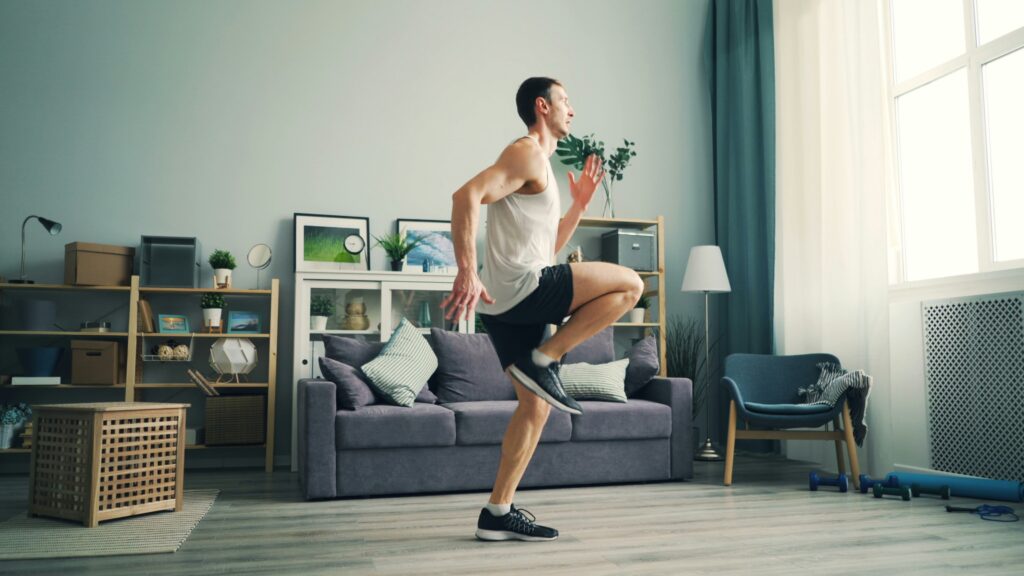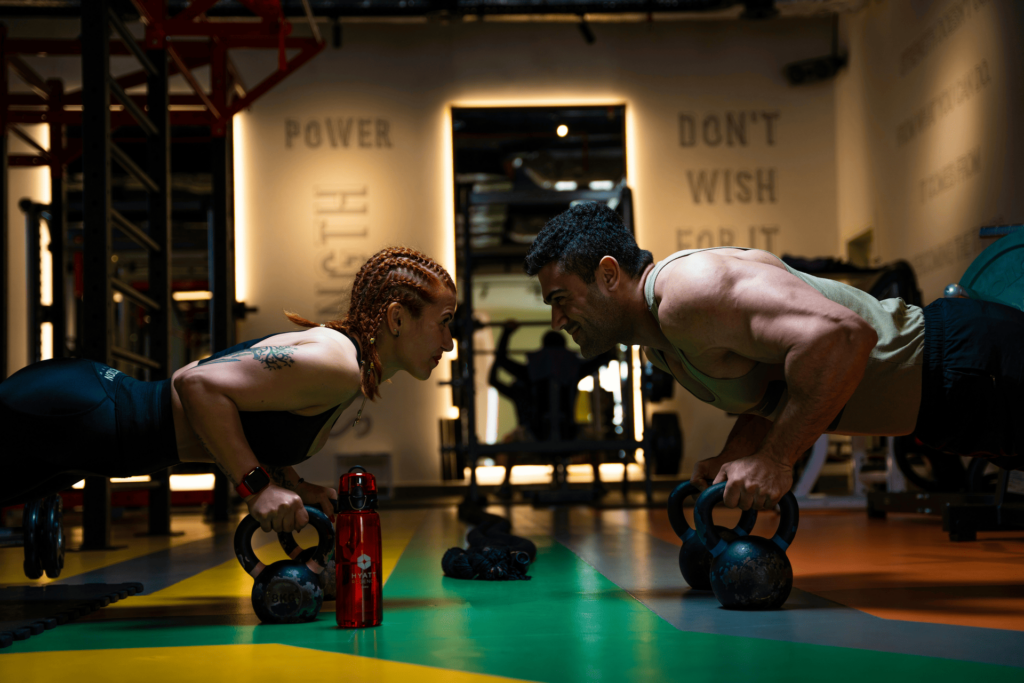Struggling with tight hamstrings or stiff calves? You are not alone.
Whether you are a fitness enthusiast, a desk worker, or simply someone dealing with everyday muscle tension, yoga leg stretches can be a game-changer for your flexibility and overall mobility.
Yoga not only improves muscle elasticity but also relieves soreness and prevents injuries.
Incorporating these stretches into your daily routine can help unlock tight muscles, improve circulation, and make movement easier and more fluid.
From beginner-friendly poses to deeper stretches, this guide will walk you through these top five yoga leg stretches to enhance flexibility and relieve tension.
So, roll out your yoga mat and let’s get started on the path to better mobility and muscle relief!
Why Yoga Leg Stretches Are Essential
When maintaining a healthy, active lifestyle, flexibility plays a crucial role. We often experience tight muscles in the legs, which can limit our movement and lead to discomfort.
Yoga offers an effective and holistic solution by enhancing, alleviating muscle soreness, and preventing injuries.
Here are the reasons why yoga leg stretches can be essential to add to your workout routines:
- Flexibility Boost
Yoga stretches target the muscle fibers, increasing their elasticity and reducing stiffness.
This is particularly helpful for individuals who sit for extended periods or engage in repetitive movements.
Regular stretching improves range of motion, allowing you to move with ease.
- Muscle Relief
Post-workout soreness or prolonged sitting often leaves the legs feeling tense.
Yoga stretches improve blood flow, flush out lactic acid, and relieve muscle tightness.
This helps your body recover faster and reduces discomfort.
- Prevention of Injuries
Stiff muscles are more prone to strains and tears.
Adding yoga leg stretches into your quick morning workout routine strengthens muscles and connective tissues, reducing the risk of common injuries like hamstring pulls or calf strains.
Preparation Before Doing Yoga Leg Stretching
Before doing deep stretches, proper preparation is essential to ensure safety and maximize the benefits.
A good warm-up increases blood flow and prepares your muscles for stretching. Simple activities like light jogging in place, dynamic stretches, or a few rounds of sun salutations can help loosen your body and get you ready for the poses.
You do not need much for yoga. A comfortable yoga mat, breathable clothing, and optional yoga blocks or straps for added support.
And lastly, make sure you are in a quiet space where you can focus without distractions.
Top 5 Yoga Leg Stretches
Here are the top five yoga leg stretches that help release tension, improve flexibility, and build strength:
1. Downward Dog (Adho Mukha Svanasana)
Muscles Targeted: Hamstrings, calves, and lower back.
How to Do Downward Dog Yoga Pose:
- Begin in a tabletop position with your hands and knees on the mat.
- Spread your fingers wide for support and tuck your toes under.
- Exhale as you lift your hips toward the ceiling, forming an inverted “V” shape.
- Straighten your legs while keeping a slight bend in the knees if needed.
- Press your heels gently toward the ground, ensuring your back stays straight and shoulders relaxed.
- Hold for 5 to 10 breaths, focusing on lengthening the spine.
This foundational yoga pose stretches the entire posterior chain, particularly the hamstrings and calves, while also strengthening the arms and shoulders. It helps alleviate stiffness in the back and promotes overall flexibility.
2. Low Lunge (Anjaneyasana)
Muscles Targeted: Hip flexors, quads, and calves.
How to Do Low Lunge Yoga Pose:
- Start in a high plank or downward dog position.
- Step your right foot forward between your hands, ensuring the knee aligns over the ankle.
- Lower your left knee to the mat and rest the top of your left foot on the ground.
- Place your hands on your right thigh for balance or extend them overhead to deepen the stretch.
- Keep your hips square and hold for 5 to 8 breaths before switching sides.
This pose deeply stretches the hip flexors, quadriceps, and calves, making it ideal for counteracting the effects of prolonged sitting. It also enhances lower body flexibility and promotes better posture.
3. Seated Forward Fold (Paschimottanasana)
Muscles Targeted: Hamstrings, calves, and spine.
How to Do Seated Forward Fold Yoga Pose:
- Sit on the mat with your legs extended straight in front of you.
- Flex your feet to engage your calves and hamstrings.
- Inhale to lengthen your spine, and as you exhale, hinge at your hips to fold forward.
- Reach for your feet, ankles, or shins, keeping your spine elongated.
- Avoid rounding your back and hold for 5 to 10 breaths.
This calming stretch improves flexibility in the hamstrings and calves while gently lengthening the spine. It also helps release tension in the lower back and promotes relaxation, making it an excellent cool-down pose.
4. Reclining Hand-to-Big-Toe Pose (Supta Padangusthasana)
Muscles Targeted: Hamstrings, inner thighs, and lower back.
How to do the Reclining Hand-to-Big Toe Yoga Pose:
- Lie on your back with both legs extended on the mat.
- Bend your right knee and grab your big toe with your fingers, or loop a strap around the sole of your foot.
- Straighten your right leg toward the ceiling while keeping your left leg grounded and engaged.
- Keep your hips level and your spine neutral.
- Hold for 5 to 8 breaths, then switch sides.
This pose provides a deep stretch for the hamstrings and inner thighs, improves hip mobility, and helps relieve lower back discomfort. It’s particularly useful for athletes or those with tight legs.
5. Butterfly Pose (Baddha Konasana)
Muscles Targeted: Inner thighs, hips, and groin.
How to Do Butterfly Yoga Pose:
- Sit on the mat and bring the soles of your feet together, letting your knees fall outward.
- Hold your feet with your hands and pull them closer to your body to intensify the stretch.
- Keep your back straight and avoid collapsing forward.
- Gently press your knees toward the mat using your elbows, if comfortable.
- Hold for 8 to 10 breaths.
This pose helps to open the hips and stretch the inner thighs and groin muscles. It enhances flexibility in the lower body and promotes relaxation, making it ideal for warming up or cooling down.
How to Maximize Your Yoga Stretching Routine
Enhancing your flexibility and mobility through a yoga workout requires more than just performing stretches. Follow these tips to make your yoga routine safer, more effective, and enjoyable:
- Consistency is Key
The most effective way to improve your flexibility and mobility is through regular practice.
Dedicate at least 10 to 15 minutes daily to these stretches, incorporating them into your morning routine, after workouts, or before bed.
Building a consistent habit not only improves physical results but also fosters a sense of mental discipline and relaxation.
Over time, you will notice increased flexibility, reduced stiffness, and improved posture.
- Breathe Through the Stretches
Breathing is an essential part of yoga and stretching. Deep, mindful breaths enhance relaxation and help your muscles release tension.
Use your inhale to prepare and your exhale to sink deeper into each stretch.
For example, when holding a forward fold, exhale slowly as you reach further.
Controlled breathing also improves circulation, delivering oxygen to your muscles, which aids in recovery and enhances the effectiveness of your stretches.
You can read more about guided breathing techniques here.
- Listen to Your Body
Stretching should be a balance of effort and comfort. While gentle discomfort is normal as you challenge your limits, sharp pain is a sign to stop immediately.
Pushing yourself too hard can lead to strains or injuries.
Instead, respect your body’s boundaries and progress gradually. With consistent practice, your flexibility will naturally improve without risking harm.
If you’re new to yoga, consider starting with modified poses or using props like straps and blocks to support your range of motion.
- Warm Up Before Stretching
Stretching cold muscles can increase the risk of injury, so it’s essential to warm up first.
Spend 5 to 10 minutes engaging in light cardio, such as walking, jogging in place, or dynamic movements like leg swings.
A warm body responds better to stretching, making your routine more effective and enjoyable.
- Focus on Proper Alignment
Alignment is critical to getting the most out of your yoga stretches while avoiding injury.
Pay attention to your posture in each pose: keep your back straight, engage your core, and avoid overextending your joints.
Practicing with proper form ensures the stretch targets the intended muscles and promotes long-term benefits.
Consider using a mirror or practicing in front of an instructor if you’re unsure about your alignment.
- Incorporate Variety
While the stretches outlined above are excellent for your legs, adding variety to your routine keeps it engaging and benefits other parts of your body.
Include poses that target your upper body, spine, and hips to create a well-rounded practice. For example, integrate poses like Child’s Pose or Cobra Stretch to balance your session.
- Create a Relaxing Environment
Your surroundings can influence your yoga practice.
Find a quiet, comfortable space where you won’t be interrupted. Use a yoga mat, soft lighting, or calming music to set the mood.
A relaxing environment allows you to focus fully on your stretches, deepening the mind-body connection.
Become More Flexible with Yoga Leg Stretches
Yoga leg stretches are a powerful way to improve flexibility, relieve muscle tension, and prevent injuries.
After integrating these poses into your daily workout routine, you will notice increased mobility and reduced soreness over time.
Start your yoga journey today!
Roll out your yoga mat and give these stretches a try. Your legs will thank you!
FAQs
Commonly asked questions…
How often should I do yoga leg stretches?
Aim to practice these stretches at least three to five times a week for best results. Consistency helps improve flexibility and relieve tension more effectively.
Can beginners perform those yoga leg stretches?
Absolutely! Each pose can be modified to suit different levels.
For example, beginners can use yoga blocks or straps to ease into the stretches.
What should I do if I feel pain during a stretch?
If you experience pain, stop immediately and reassess your yoga form. Focus on maintaining proper alignment and only go as far as your body allows comfortably. Pain may indicate overstretching or improper posture.


